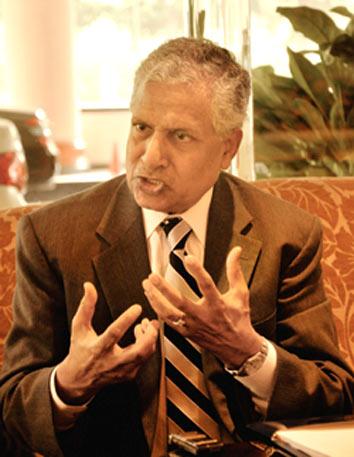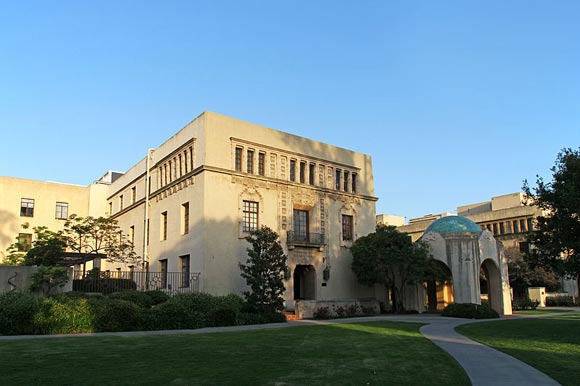Photographs: Courtesy Careers360 B Mahesh Sarma, Careers360
How do you view the Indian higher education system, especially the university system?
I think an argument can be made that there are serious problems with our higher education system.
The major issues to my mind are: First, there aren't enough young people from top of the class going into higher education as teachers, researchers, artists, thinkers, poets, journalists and writers.
Second, a very larger part of higher education has become professional-oriented.
Don't mistake me because I am an engineer, and I teach management. But, professional education for all its value is to education what dessert is to a healthy diet.
Higher education of a society, a country of size 1.2 billion cannot consist of management, engineering schools only. You need the plain stuff: mathematics, physics, history, literature, music, geography, psychology, economics and politics.
But world over the space for such programmes are shrinking. Right?
Certainly not true in the US. And that doesn't mean India should be like the US. I see people doing Bachelor's at Yale in Art History and being hired by Goldman Sachs at 300,000 dollars.
You can always take a high school kid and teach him things for which a company like Infosys hire IITians. But an IITian is hired thinking that he can do something great, something innovative.
At an institutional level do you see that hunger to be world class?
It is not that our universities don't have very smart students. But number of people who are very smart and are into teaching or research is very less. How many people from top 1 per cent of any class say that I want to be a professor?
The raw talent that is available is not appropriately moulded in Indian universities.
We have 26 million babies each year; 10 million of them complete high school. Let's suppose 4 million of them complete college. How many are going abroad? About a lakh.
One lakh out of 26 million, I think there are 1 out of 100 geniuses. Even if we assume, that they are the best, and another two-three lakh are left behind, what is the quality of education they are getting?
Who is teaching in our engineering colleges? The guys who graduated just a year before and couldn't find a job anywhere.
What do you think the students would learn? Infosys said less than 2 per cent applications we get are employable. FICCI and World Bank say that two-third graduates are not employable.
Please click NEXT to continue reading...
'The government cannot spend more on education'
Image: At Caltech, student fee comprises only 4 per cent of the total fundsPhotographs: Wikimedia Commons
What is the way forward?
No outsider like me can actually device a reasonable way forward. So my part of my answer is, it looks like a problem, but the solution has to be developed here.
Having said that, I grew up in India and did a major portion of studies in India, so I think I owe something to the nation.
First, I would say, attract more people from top of the class for teaching and into universities. Right now, with some exceptions, teaching has become a profession of last resort.
Very few people choose to become professors. We will have to attract more people to save universities and colleges.
Number two, is the finances. Government doesn't have the money. It spends almost 12 per cent of the budget on education. They will not be able to spend more money on education.
Where is the money going to come from?
I haven't seen a single university any place in the world that delivers quality education without very significant subsidies, whether it comes from government or charity.
Whether it is Tata Institute of Fundamental Research where TATA is giving the subsidy or Delhi University which is Govt-funded. But I have never seen one university in the world that makes a profit and delivers quality education.
I analysed the proportion of financing that comes from a student fees in 39 US universities. For Caltech, it is 4 per cent and for Yale 14 per cent or so.
In my last visit to UGC I got the annual reports of 5-6 major Indian universities. I opened their financial statement in the report and it was all blank. At the end there was a line written, so many hundred crores.
The amount sanctioned and spent was same. No budget shown, no information on where the money went. This has to change. The best way to improve governance and management of Indian universities is to get transparency.
Do you think we have the wherewithal to be world class?
I speak to many universities and had a chance to meet VCs of many universities. But a Vice Chancellor is not the driver of the university.
Students and faculty are the true drivers. There has to be a sense of responsibility among students and faculty, faculty and alumni ultimately. If they all pull together then we might see growth.
It may not happen now. It may not happen next year. But five years hence it would begin to happen. And then we might be on our way to growth and betterment The country deserves it.



Comment
article